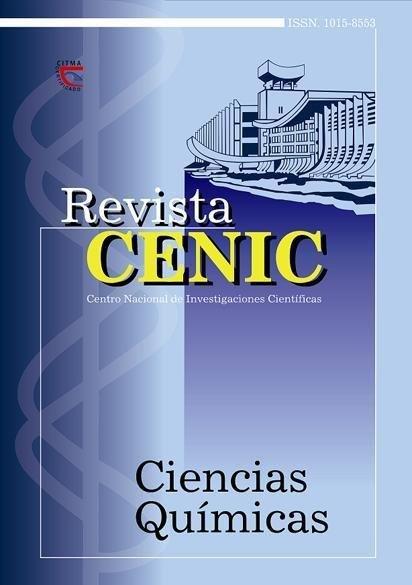Eliminación de cromo y cadmio mediante Scenedesmus obliquus en estado inmovilizado
Abstract
Dumping wastewaters from plating industry with a high content in chromium and cadmium is a potential hazard that is presented to the environment and specially to the population. It is known that some metals, including the heavy metals, at low concentrations participate in different metabolic routes, but at high concentrations are toxic for many living organisms. Some microorganisms
taking the heavy metals from the environment are capable of concentrating and accumulating large quantities of them in different citoplasmatic structures with non-toxic effects. Microalgae have affinity by the polyvalent metals making possible their use as depollutant agent in waters that contain metallic ions in solution as alternative methods when their employment is effective as recovery method. In this report a chromium and cadmium removal study from a plating wastewater, using a reactor with immobilized Scenedesmus obliquus culture was made. The removal efficiency of Cr(III) was 92,40 % and Cd(II) was 95 %. The quick increase experienced in the pH had an important effect on the form of removal of the metal for the microalga Scenedesmus obliquus, all which allowed that the metals in solution formed a precipitate and it was deposited forming a green-blue mud. It was possible to recover from 83 to 85 % of the mass of the metallic ions present in the treated wastewater. The temperature of the wastewater maintained values between 22,5 and 34 oC, which are useful for the good development of the Scenedesmus obliquus, as well as for the process of heavy metals removal.

Downloads
Published
How to Cite
Issue
Section
License
Copyright (c) 2005 Copyright (c) 2005 Revista CENIC Ciencias Químicas

This work is licensed under a Creative Commons Attribution-NonCommercial-ShareAlike 4.0 International License.
Los autores que publican en esta revista están de acuerdo con los siguientes términos:
Los autores conservan los derechos de autor y garantizan a la revista el derecho de ser la primera publicación del trabajo al igual que licenciado bajo una Creative Commons Atribución-NoComercial-CompartirIgual 4.0 que permite a otros compartir el trabajo con un reconocimiento de la autoría del trabajo y la publicación inicial en esta revista.
Los autores pueden establecer por separado acuerdos adicionales para la distribución no exclusiva de la versión de la obra publicada en la revista (por ejemplo, situarlo en un repositorio institucional o publicarlo en un libro), con un reconocimiento de su publicación inicial en esta revista.
Se permite y se anima a los autores a difundir sus trabajos electrónicamente (por ejemplo, en repositorios institucionales o en su propio sitio web) antes y durante el proceso de envío, ya que puede dar lugar a intercambios productivos, así como a una citación más temprana y mayor de los trabajos publicados (Véase The Effect of Open Access) (en inglés).













